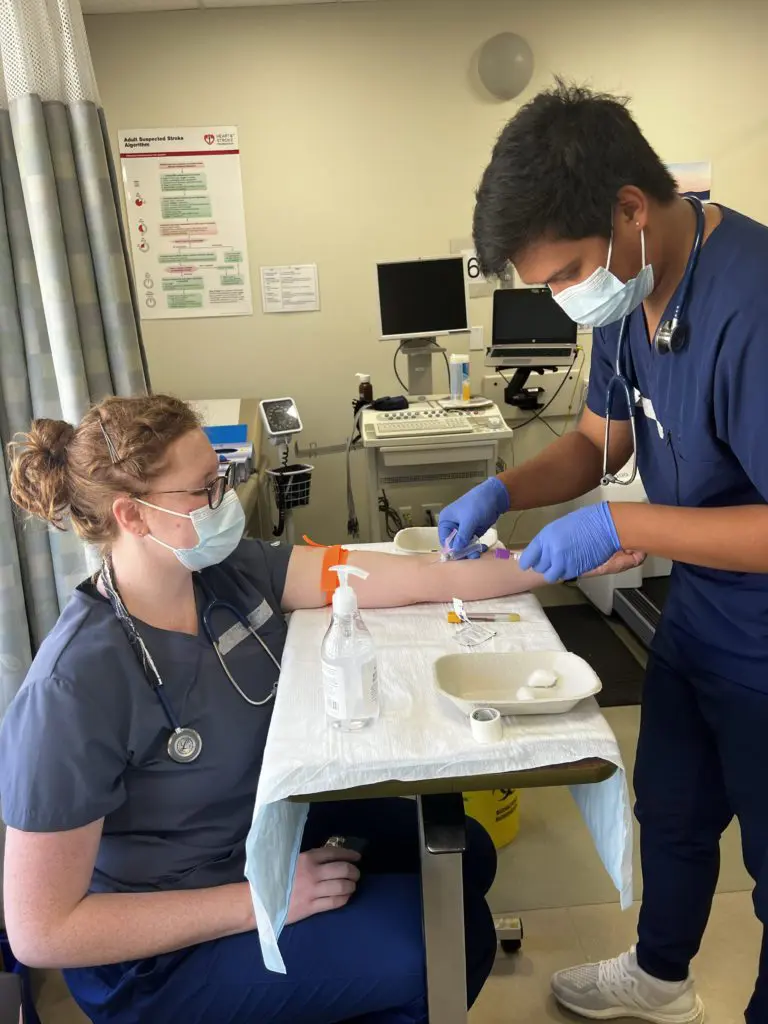Hello everyone,
I hope that each and one of you is doing great! I feel like I haven’t written you for a long time. Anyways, I’m happy to announce that our Cardiology Class is nearing the Homestretch and we have one more month to go until our Preceptorship starts. I really can’t wait to complete this program as I’m really looking forward to work and settle with my life. Having said that, I’m only ready to complete the program but not to separate from my classmates. My class has grown so much together lately which makes it even harder to leave.
Anyhow, I’ve been asked from my college to write in this blog about Stress Tests.A stress test can be used to test for heart disease. These tests are performed by a Cardiology Technologist to determine the amount of stress that your heart can manage before developing an abnormal rhythm or any evidence of ischemia (not enough blood flow to the heart muscle). The most commonly performed stress test is the exercise stress test. Stress Tests and Holter Monitoring are my favorites out of anything. What I like about it is taking the patient’s Blood pressure, watching out for patient’s symptoms and looking for ECG changes on the Monitor. It’s the fast paced and multitasking aspect that makes me like this test. Stress Tests are ordered for a patient to see if there is adequate coronary blood flow during increasing levels of exercise, to evaluate effectiveness of heart medications on chest pain or ischemia, to determine if you might develop Coronary Artery Disease or to assess the functioning of your heart valves.
There are different types of stress tests that can be done on a patient. There is a regular stress tests type that is for patients able to walk on the treadmill, and there is also a Nuclear Testing which involves injecting a tracer that will help the nuclear techs to identify any blockages in the coronary arteries. These tests have side effect like nausea, headache, chest pain or shortness of Breath. Furthermore, this test takes a little longer than a regular stress test due to the intravenous infusion and side effects the patient might develop. Patients who experience side effects are given a drug called Aminophylline which will help reduce their discomforts. A typical stress test is performed by first having the patient enter the changing room where the CT confirms the patient’s identification including medical history and medications. Then I begin by cleaning the patient’s chest area with alcohol and placing ECG electrodes appropriately. The leads will be attached to the electrodes and a recording device will be hooked up at the patient’s waist. During these steps I’ll explain to the patient the whole procedure and assure that the patient feels comfortable throughout. As soon I have prepared the patient I will take a resting BP and ECG in a supine and standing position. The doctor will have a look at the ECG and BP to assure that the patient is able to start an exercise stress test. Then I will walk my patient to the treadmill and start with the test. During the whole procedure my role as a Cardiology Technologist is to take the patient’s BP, analyze the ECG monitor by watching out for any ECG changes and watch for the patient’s symptoms. There you go, this is what I meant about multitasking. 🙂 As a whole this tests involves a lot of skills you need to perform during a fast paced procedure. I’m very happy that my instructors have taught me well and can’t wait to perform stress tests during my preceptorship. Thank you for reading, and I will update you shortly with a new topic of my program.
All Is Well !!!
Regards,
Check out a video of our cardio tech students in action.






![An ECG demonstrates the extensive antero-septal-lateral myocardial infarction [heart attack] that Taryn witnessed.](https://stenbergcollege.com/wp-content/smush-webp/2022/12/ecg-1024x530.jpg.webp)



